Can you eat raw steak? This question has been the subject of countless debates among meat enthusiasts and health-conscious individuals. Some may argue that consuming raw steak can lead to a unique gastronomic experience, bringing forth the natural flavors of the meat, while others may insist that doing so exposes the diner to potential foodborne illnesses. Regardless of which side of the argument you find yourself on, exploring the facts behind raw steak consumption is essential, considering the potential risks and benefits involved.
In this article, we will delve into raw steak, examining the factors contributing to its safety, tastiness, and impact on one’s health. By better understanding this often-controversial topic, you can make an informed decision and enjoy your culinary experience, whether it entails indulging in a rare steak or savoring a carefully prepared tartare.
Can You Eat Raw Steak?
If you’re wondering whether or not it’s safe to eat raw steak, the answer is a little complicated. While raw beef can be safe to eat if obtained from a reputable source and stored correctly, there’s still a risk of exposure to harmful bacteria.
Those who advocate for eating raw beef argue that the body more readily absorbs its nutrients. However, it’s important to note that raw meat can contain bacteria like Salmonella, Listeria, and E. coli that can cause food poisoning. While some may find eating raw beef exciting, others may prefer steaks cooked to a medium or well-done temperature. It’s always best to err on the side of caution and cook beef to prevent food poisoning.
Is It Safe To Eat Raw Steak?
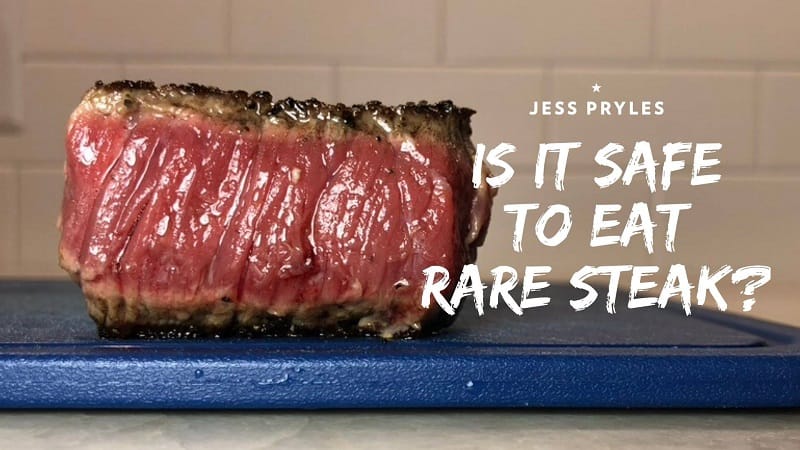
Although some people may enjoy the taste of raw steak, it is not necessarily safe to consume. Raw beef can harbor harmful bacteria such as salmonella, leading to food poisoning and unpleasant digestive side effects. However, raw beef can be safe if it meets certain guidelines, such as being purchased from a reliable source and properly stored.
Despite claims that raw meat is superior in nutritional value and health, there is limited evidence to support these claims. It is important to note that eating raw pork or chicken is not advised. In summary, while raw steak may be tempting to some, it is not without risk and should be cautiously approached.
What Guidelines Should One Follow When Consuming Raw Beef?
I understand the importance of following specific guidelines to ensure my safety and reduce the risk of foodborne illness. If you’re interested in trying raw beef or have started consuming it, you should follow a few guidelines to keep yourself safe.
First and foremost, make sure you’re buying your beef from a reputable source. Look for a trusted butcher or meat market that specializes in raw beef. They should be able to provide information on the cut of meat you’re buying, where it came from, and how it was handled.
When it comes to preparing your beef, cleanliness is key. Ensure all surfaces, utensils, and hands are thoroughly washed before handling the meat. Use a separate cutting board for raw meat to avoid cross-contamination with other foods.
Next, consider the cut of beef you’re consuming. Some cuts, such as sirloin or fillet, are safer for raw consumption than others, such as ground beef or brisket. Always research and ask your butcher for their recommendations on which cuts are best for raw consumption.
Temperature control is also crucial when consuming raw beef. Keep your meat refrigerated until you’re ready to consume it, and never let it sit at room temperature for an extended period. Consuming your raw beef within a few hours of purchasing it is best, as extended storage can increase the risk of bacterial growth.
Finally, pay attention to any warning signs when consuming raw beef. If the meat smells off, has an unusual texture or appearance, or if you experience any symptoms such as nausea, vomiting, or diarrhea, stop consuming it immediately and seek medical attention.
Consuming raw beef can be a delicious and enjoyable experience, but following these guidelines is important to ensure your safety. Always buy from a reputable source, practice good hygiene, monitor temperature, and be cautious of warning signs.
Read more:
- Is It Safe To Eat Food Cooked In A New Oven
- Is It Safe To Eat 2 Year Old Frozen Meat
- Can You Eat Bacon Raw
- Can You Eat Lamb Rare
What Is The Difference Between Rare And Raw Steak?
As someone who loves a good steak, I’ve often wondered about the difference between rare and raw steak. Is there a significant difference between the two, or is it just personal preference? After doing some research, I’ve concluded that there are indeed some key differences between rare and raw steak.
Raw steak, as the name suggests, is completely uncooked. This means that it hasn’t been exposed to any heat whatsoever. Rare steak, on the other hand, has been cooked for a brief period of time, usually just long enough to sear the outside but leave the inside relatively rare.
One of the main differences between the two is in terms of safety. Raw steak has a higher risk of bacterial contamination since it hasn’t been cooked. This means that if you’re going to eat raw steak, you need to make sure that it’s from a reputable source and has been appropriately handled.
Rare steak, on the other hand, is generally considered safe to eat as long as it has been cooked to the appropriate temperature. This means any bacteria in the meat will have been killed off, reducing the risk of foodborne illness.
Another key difference between the two is the taste and texture. Raw steak is chewy and tough since the muscle fibers haven’t been broken down by heat. It also has a distinct flavor that can be overwhelming for some people.
Rare steak, on the other hand, is more tender and juicy. The searing process helps to break down the muscle fibers, making it easier to chew and giving it a more pleasant texture. It also has a milder flavor that allows the natural taste of the meat to shine through.
Are There Any Proven Health Benefits To Consuming Raw Beef?
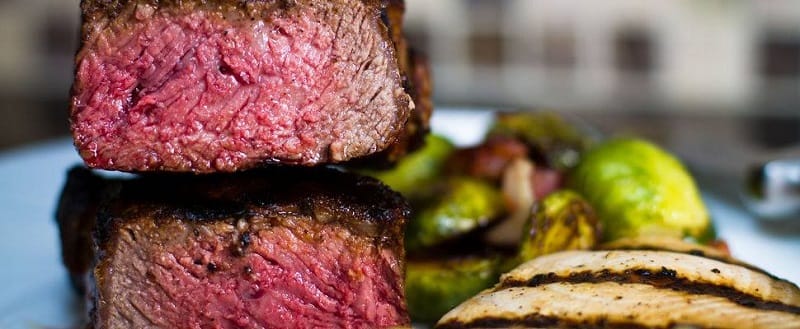
I stumbled upon a controversial topic that food experts and enthusiasts alike have discussed: consuming raw beef. Some claim that raw beef has several health benefits. Here are some of the supposed benefits of consuming raw beef:
- Increased Nutrient Absorption: Raw beef is said to contain more nutrients than cooked beef, as cooking can destroy some of the nutrients. By consuming raw beef, you may be able to absorb more vitamins and minerals, such as iron and vitamin B12.
- Better Digestion: Raw beef is easier to digest than cooked beef, as cooking can cause the proteins to denature and become harder to break down. Raw beef also contains enzymes that aid digestion, leading to less bloating and discomfort after eating.
- Improved Immune Function: Raw beef contains natural probiotics that can help improve gut health and boost the immune system. These probiotics can also help fight off harmful bacteria that cause food poisoning.
In conclusion, while there may be some health benefits to consuming raw beef, weighing the potential risks before deciding to try it is essential. As with any food, it is important to practice proper food safety measures and consume them in moderation.
What Are The Potential Dangers Of Eating Raw Steak?
First and foremost, raw steak can be a breeding ground for harmful bacteria such as E. coli and Salmonella. These bacteria can cause severe food poisoning, with symptoms ranging from nausea and vomiting to more serious complications like kidney failure.
In addition to the risk of bacterial infection, raw steak can contain harmful parasites such as tapeworms. These parasites can cause various health problems, including intestinal blockages and malnutrition.
But even beyond the health risks, other potential dangers exist. For one, consuming raw steak can be incredibly difficult on your digestive system. Raw meat is much tougher to digest than cooked meat, which can lead to stomach discomfort and other digestive issues.
Furthermore, the raw meat itself can be a choking hazard. The texture of raw steak is much different than cooked steak, and it can easily get stuck in your throat if you’re not careful.
Overall, while eating raw steak may seem exciting or daring, it’s essential to consider the potential dangers before indulging.
What Are The Benefits Of Cooking Beef Before Consumption?
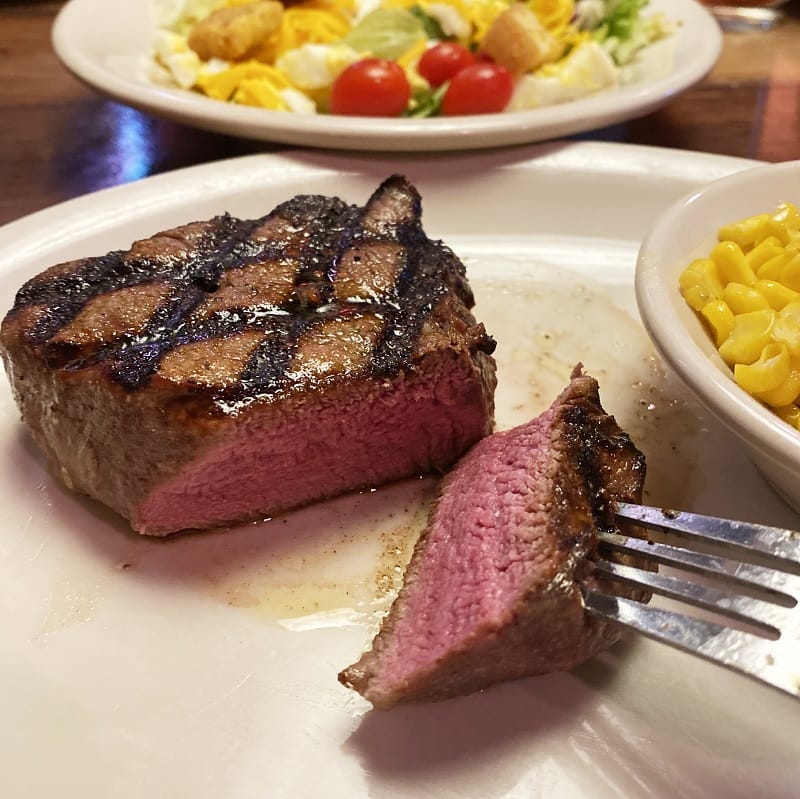
There are numerous advantages to cooking beef before eating it.
First and foremost, cooking beef ensures that harmful bacteria and pathogens are destroyed. Raw beef can contain dangerous bacteria such as E. coli, Salmonella, and Listeria, which can cause serious illnesses if ingested. When beef is cooked to the appropriate temperature, these bacteria are killed off, making the meat much safer to consume.
In addition to safety concerns, cooking beef can improve its flavor and texture. When beef is cooked, the heat causes the proteins and fats in the meat to break down and interact, creating new flavors and enhancing existing ones. Proper cooking can also make beef more tender, which can be especially important for tougher cuts of meat.
Cooking beef can also make it more nutritious. While raw beef is a good source of protein and other nutrients, cooking can make those nutrients more easily digestible and accessible to our bodies. Some nutrients, such as iron and zinc, are more readily absorbed by our bodies when beef is cooked.
Another benefit of cooking beef is that it can help reduce food waste. By cooking beef thoroughly, we can use more meat and avoid throwing away parts that may be undercooked or unsafe to eat. This can not only save money, but it can also be more environmentally friendly.
Is Pink Steak Safe To Eat?
According to factual data, it is generally safe to eat a pink steak if it has been handled and cooked properly. Most of the bacteria in a steak will accumulate on its exterior surface, and the risks of contaminants from rare to medium-cooked steaks are incredibly low. However, it is important to note that the United States Department of Agriculture recommends not eating or tasting raw or undercooked meat, as it may contain harmful bacteria.
Additionally, while pink poultry has risks of salmonella, a slight amount of pink in the center of a steak is generally safe to eat when cooked to the proper temperature. To ensure the safety of eating a steak, it should be grilled or seared on high heat and brought to an internal temperature of 120-125°F for rare or 125-130°F for medium rare. In short, pink steak can be a safe and delicious meal option if prepared correctly.
How Can You Tell If Steak Is Raw?
How can you tell if your steak is raw? It’s a question I’ve often asked myself, and after researching and testing out different methods, I’ve come up with a few foolproof ways to determine if your steak is raw or not.
First, it’s important to note that raw meat can be dangerous to consume, as it can contain harmful bacteria that can cause food poisoning. So, it’s always better to err on caution and ensure your steak is cooked to the appropriate temperature.
One of the easiest ways to tell if your steak is raw is by checking its color. Raw meat will have a bright, pinkish-red color, while cooked meat will be browned on the outside and have a more muted red color on the inside. If your steak is still bright pink or has a red liquid pooling on the plate, it’s likely still raw.
Another way to tell if your steak is raw is by using the touch test. Gently press on the center of the steak with your finger – if it feels soft and squishy, it’s likely still raw. As the steak cooks, it will become firmer to the touch, so if it feels more like the fleshy part of your hand, it’s likely cooked to a medium-rare or medium temperature.
Of course, using a meat thermometer is the most reliable way to tell if your steak is raw. Insert the thermometer into the thickest part of the steak, making sure it doesn’t touch bone or fat. The temperature you’re aiming for will depend on your personal preference – rare is around 130°F, medium-rare is around 135°F, the medium is around 145°F, and well-done is around 160°F. Your steak is likely still raw if your thermometer reads below your desired temperature.
Raw Vs. Cooked Beef Nutrition
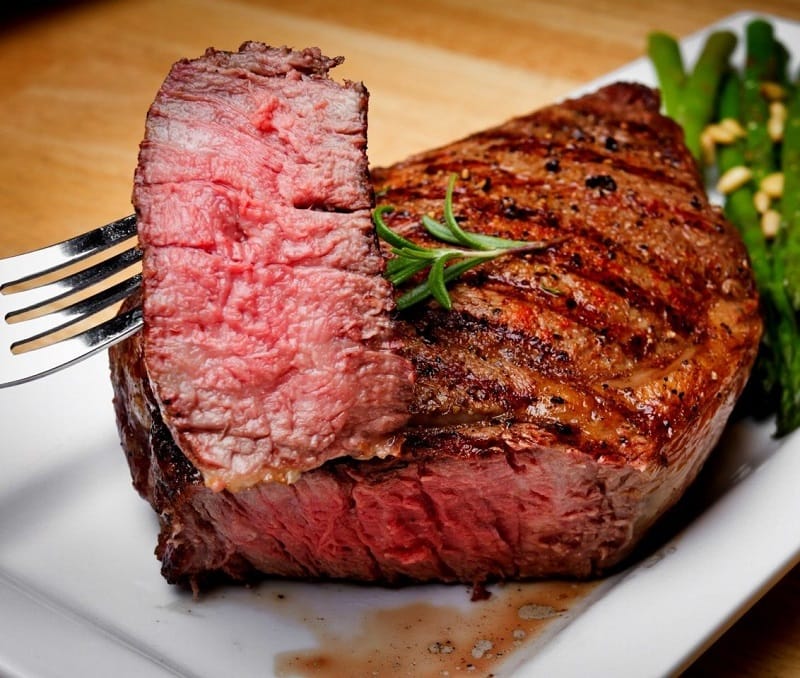
First, let’s talk about the nutritional benefits of raw beef. Raw beef is high in protein, B vitamins, and minerals like zinc and iron. The protein in raw beef is more bioavailable, meaning that our bodies can absorb and use it more easily. Additionally, raw beef contains enzymes and other nutrients that are destroyed during cooking.
However, there are also some risks associated with eating raw beef. Raw beef can contain harmful bacteria like E. coli and salmonella, which can cause food poisoning. To reduce the risk of illness, sourcing your beef from a reputable supplier and handling it safely is important.
Now, let’s move on to cooked beef. Cooking beef can increase its nutritional value in some ways. For example, cooking beef can make certain nutrients like lycopene and beta-carotene more bioavailable. Additionally, cooking beef can destroy harmful bacteria and parasites, making it safer to eat.
However, cooking beef can also reduce its nutritional value in other ways. For example, cooking beef at high temperatures can create harmful compounds like heterocyclic amines (HCAs) and polycyclic aromatic hydrocarbons (PAHs), which have been linked to cancer. Additionally, cooking beef for too long or at too high a temperature can destroy some of the nutrients in the meat.
So, I’ve concluded that there is no “right” way to eat beef. Both raw and cooked beef have their unique nutritional benefits and risks. I prefer to eat cooked beef most of the time. I like the taste and texture of cooked beef and feel more confident in its safety. However, I occasionally enjoy a raw beef dish, like beef tartare or carpaccio, as a special treat.
Is Raw Beef Digestion Difficult For The Human Body?
Although humans can digest raw meat, it takes more energy and effort to break down compared to cooked meat. Cooked meat provides more nutrients and is easier to digest, making it a healthier option. Poorly chewed meat can also be challenging to digest. However raw beef dishes remain popular in many cultures, but they can harbor bacteria that cause illnesses.
It’s important to note that beef can also be contaminated with Toxoplasmosis gondii, a protozoal parasite from cats that can survive in both cattle and humans. While our ancestors may have eaten raw meat, the human body has evolved to process better and benefit from cooked meats.
How Can Consumers Guarantee Quality When Selecting Raw Steak?
When it comes to selecting a raw steak, consumers have a lot of options to choose from. It can be overwhelming trying to determine which cuts of meat are of the highest quality and will taste the best once cooked. I can offer some advice on guaranteeing quality when selecting raw steak.
First and foremost, it’s important to pay attention to the color and marbling of the meat. The high-quality steak will be bright red, indicating fresh and properly stored. Additionally, the steak should have visible marbling, which refers to the fat distributed throughout the meat. This marbling gives steak its flavor, so looking for meat with a good amount of it is important.
Next, consider the grade of the meat. The United States Department of Agriculture (USDA) assigns meat grades based on several factors, including marbling, maturity, and color. The highest grade of meat is USDA Prime, typically only found in high-end restaurants and specialty butcher shops. However, USDA Choice and USDA Select are good home cooks options.
It’s also important to consider the cut of meat. Different cuts have different levels of tenderness and flavor. For example, a filet mignon is a very tender cut of meat, but it doesn’t have as much flavor as a ribeye or a T-bone steak. Consider what type of meal you’re making and choose a cut of meat that will complement it.
Finally, don’t be afraid to ask the butcher for help. They are experts in their field and can offer valuable advice on which cuts of meat are the best for your needs. They can also give you tips on preparing the meat to ensure it is perfectly cooked.
What Are the Signs that Raw Steak Has Gone Bad?
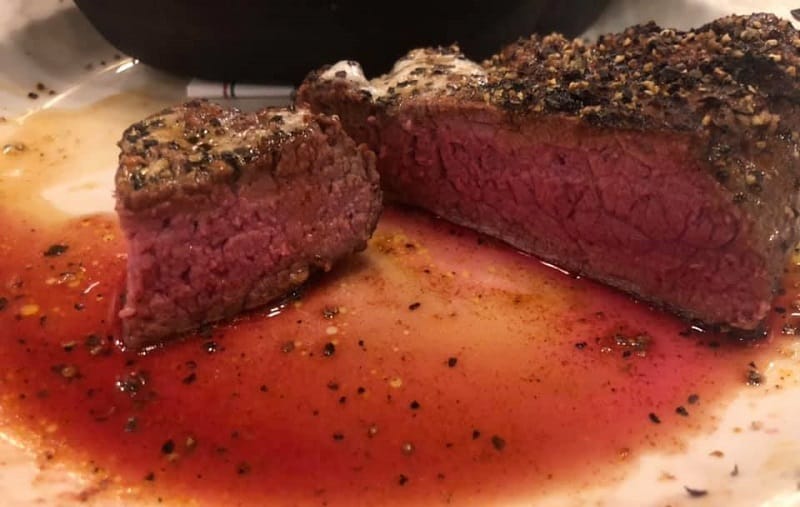
You should be aware of a few telltale signs to avoid getting sick from consuming spoiled meat. I’ll go over the signs that raw steak has gone bad.
First and foremost, the smell of your raw steak is one of the easiest ways to tell if it has gone bad. The steak has likely gone bad if the meat gives off a strong, unpleasant odor. In this case, it’s best to throw the meat away immediately and not take any chances.
Another way to tell if the raw steak has gone wrong is by looking at the color. If the meat has turned gray or brown, it’s a clear sign that it’s no longer fresh. Fresh steak should be a bright, vibrant red color. Additionally, any green or yellow spots on the meat are a sign of bacterial growth and should be thrown away.
The texture is also important in determining whether raw steak has gone bad. If the meat is slimy or sticky to the touch, or if there are any visible mold or fungus growths, it’s a sign that the steak has gone bad. Fresh steak should have a firm, dry texture.
Lastly, if you’re unsure whether your raw steak has gone bad, it’s always best to err on caution and throw it away. Consuming spoiled meat can lead to food poisoning, which can cause nausea, vomiting, diarrhea, and other symptoms.
Methods Of Preparing Raw Steak
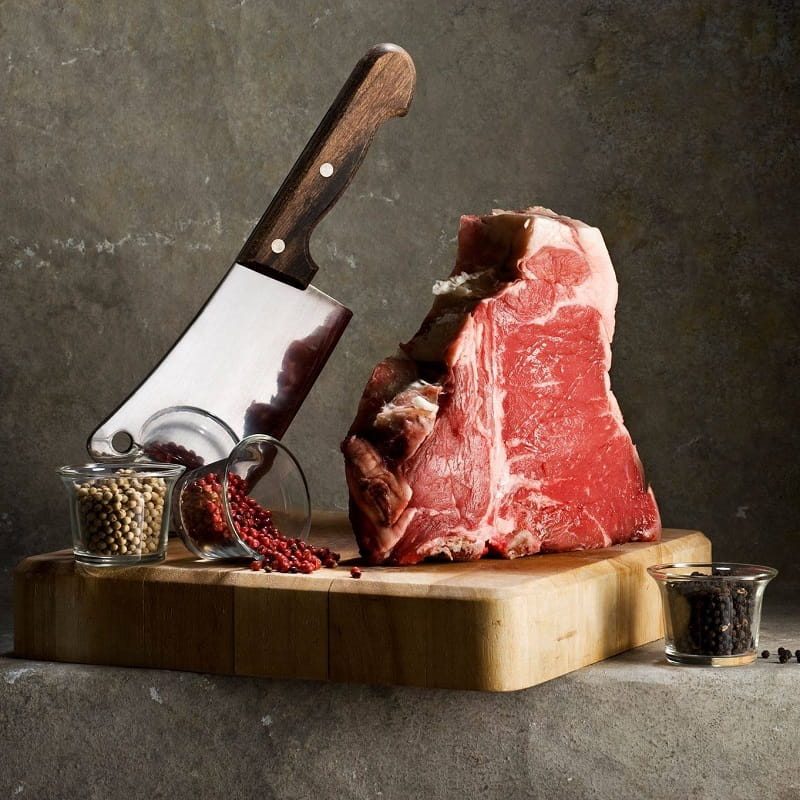
I’ll share some of my favorite methods for preparing raw steak here.
One of the most important things to keep in mind when preparing raw steak is to let it come to room temperature before cooking. This helps to ensure that the steak cooks evenly and doesn’t become tough. I usually take my steak out of the fridge and let it sit at room temperature for at least 30 minutes before cooking.
Another key step in preparing raw steak is to season it properly. I like to keep things simple and use salt and pepper, but you can also experiment with different herbs and spices to add flavor. Just be sure to season the steak generously on both sides.
One of my go-to methods for cooking steak is to sear it in a hot pan and then finish cooking it in the oven. To do this, I heat a cast iron skillet over high heat until it’s smoking hot. Then I add a bit of oil and carefully place the steak in the pan. I let it cook for a few minutes on each side until it’s nicely seared and then transfer the pan to the oven to finish cooking to my desired temperature.
If you prefer your steak grilled, there are a few tips to keep in mind. First, make sure your grill is hot before you start cooking. You want to get those nice grill marks on the steak, requiring a hot surface. Second, be sure to oil the grates lightly to prevent sticking. And finally, resist the urge to flip the steak too often. Let it cook for a few minutes before flipping it over to cook on the other.
No matter how you prepare your raw steak, resting for a few minutes after cooking is important. This allows the juices to redistribute throughout the meat and ensures it stays moist and tender.
FAQs About Can You Eat Raw Steak
What Types Of Bacteria Can Be Found In Raw Beef?
Raw beef can contain various types of bacteria that can harm human health. The most common pathogenic bacteria in beef is Escherichia coli, also known as E. coli. This bacterium is rare but can cause serious illnesses and complications if ingested.
Other bacteria can be found in raw beef, including Salmonella spp., Staphylococcus aureus, enterococcus, and Clostridium perfringens. These bacteria are typically found in the environment and can contaminate raw meat during slaughter.
What Happens If You Eat A Little Raw Steak?
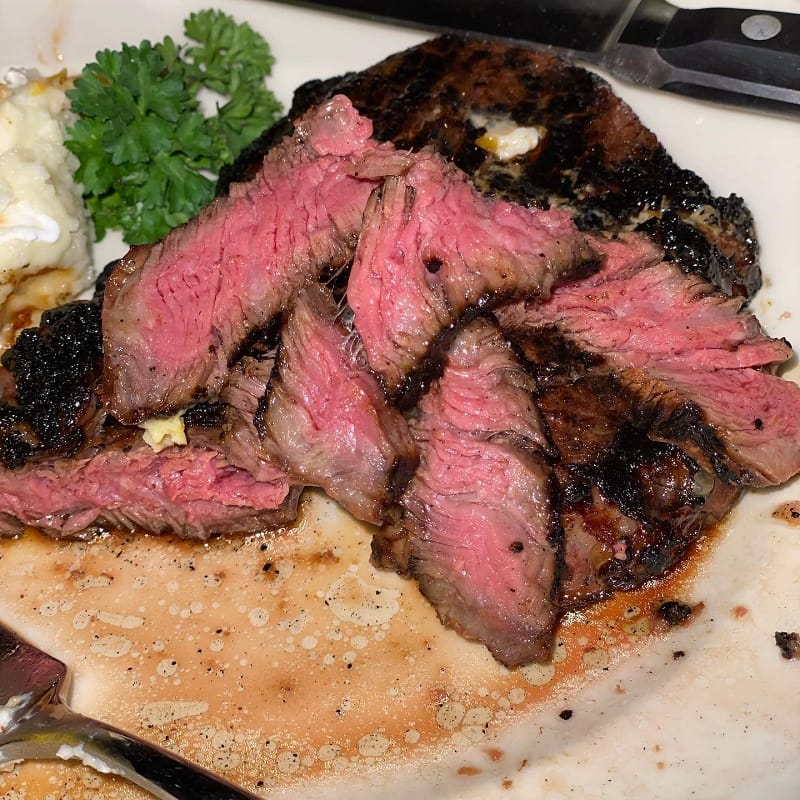
Eating raw steak might sound tempting to some, but it could lead to severe consequences. Uncooked meat can harbor dangerous bacteria such as E. coli, Salmonella, and Listeria, which may cause food poisoning. If an individual eats a bit of raw steak, they might suffer from stomach cramps, vomiting, and diarrhea for a few days. If the individual is exposed to salmonella from raw meat, the sickness may become mild to severe cases of food poisoning.
However, the good news is that these symptoms are treatable and will likely recover within a few days. It is always best to cook beef to a minimum to avoid any risk of food poisoning.
Can Individuals With Weakened Immune Systems Safely Consume Raw Steak?
Individuals with weakened immune systems are at a higher risk of developing illnesses from consuming raw or undercooked meat, including raw steak. Pregnant women, children, older adults, and people with low immunity shouldn’t consume raw beef due to harmful bacteria like Salmonella, Listeria, Campylobacter, and E. coli. However, if the meat is cooked to a safe internal temperature of at least 145°F, it can be safely consumed.
It is vital to handle and prepare raw meat carefully, keeping it away from vegetables, cooked foods, and ready-to-eat foods to avoid cross-contamination. It’s important to follow food safety guidelines to protect one’s health by avoiding undercooked meat, including steak.
What Should You Do If You Accidentally Consume Undercooked Or Raw Steak?
If you accidentally consume undercooked or raw steak, it is essential to take action quickly to avoid getting sick. Contamination symptoms include diarrhea, stomach cramps, vomiting, and a fever. The first step is to assess your risk level by determining how fresh the meat was and whether it was handled and refrigerated correctly.
If you experience symptoms such as stomach pain, diarrhea, and fever, seek a diagnosis from a medical institution immediately. Taking activated charcoal and keeping your phone nearby might help in some cases. Always adhere to recommended cooking times and temperatures to avoid consuming raw or undercooked meat.
If you are ever in doubt about the safety of your meat or experience symptoms of food poisoning, it is best to contact a medical professional for assistance.
Conclusion
In conclusion, while it is possible to eat raw steak, it is important to ensure that the meat is of high quality, properly prepared, and consumed immediately after preparation. If you are unsure about the safety of consuming raw meat, it is best to err on the side of caution and cook the steak to a safe temperature.
Do you have any questions about can you eat raw steak?? Let us know in the comments below.
References:
- https://pubmed.ncbi.nlm.nih.gov/17827047/
- https://www.thedailymeal.com/eat/stop-calling-juicy-steak-bloody
- https://www.esquire.com/food-drink/food/how-to/a24118/raw-meat-safety/
- https://www.fsis.usda.gov/sites/default/files/media_file/2021-04/at-risk-booklet.pdf

Hey readers! Chip Holland here, and I’m a Manager of this website. My passion for writing about it only matches my passion for BBQ. Follow my blog for mouth-watering recipes, tips, and tricks for the perfect smoke, grill, and BBQ. I’m sure you won’t be disappointed!
